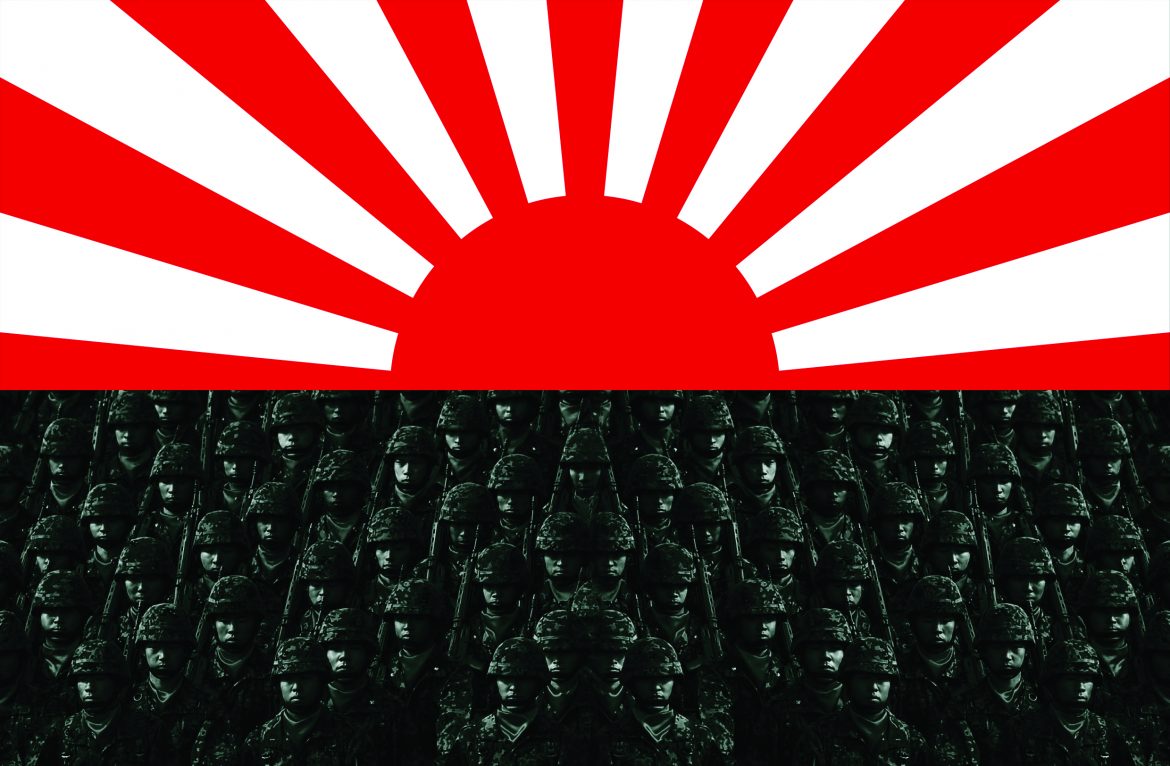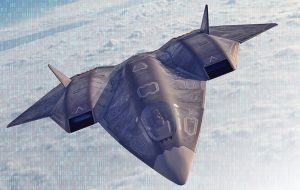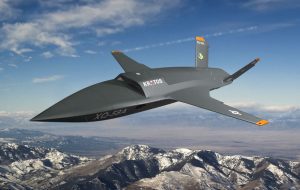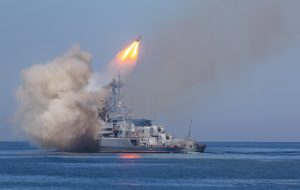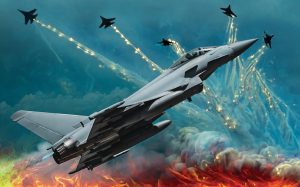In a televised speech on December 16, 2022, Japan’s Prime Minister “Fumio Kishida” announced a defence strategy the likes of which has not been seen since the end of World War II in 1945.
Comprised of three documents, this new strategy constitutes the cornerstone of the country’s foreign and security policies.
These documents include the main features of the state’s defence policy and define the defence objectives and means of achieving them as well as the volume of military spending over the next ten years.
This new strategy prioritises defence as the main focus of strengthening military power and stipulates that the goal is not to make Japan a militarized state, despite the emphasis on the possibility of launching a counterattack.
With this move, Japan ends decades of adopting a policy of peaceful coexistence and a commitment not to possess a military force.
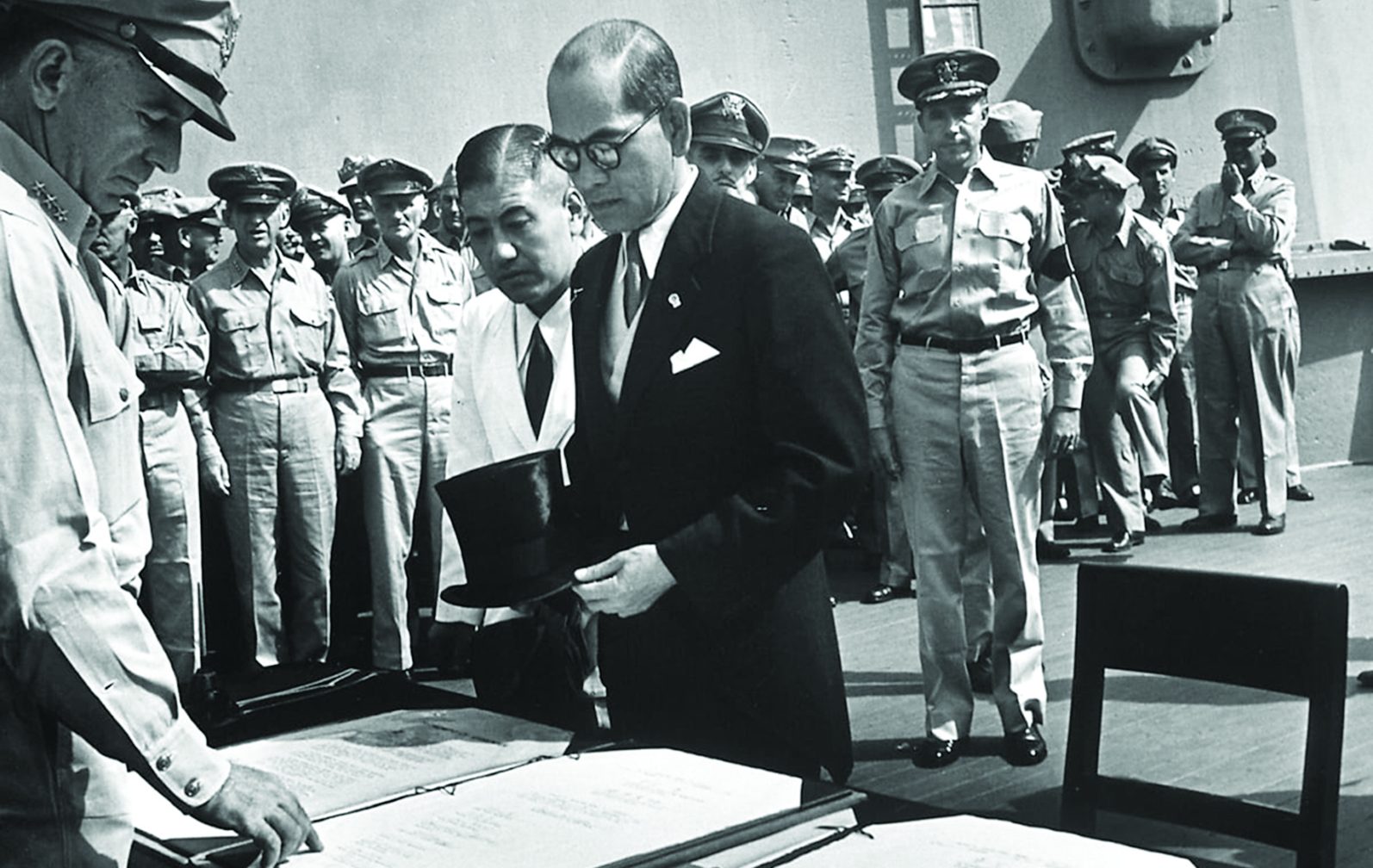
In its new defence strategy, Japan approved an increase in its annual military budget, which indicates its concerns about some of its neighbours in a stronger manner compared to its first published national security strategy in 2013, which stated that Japan “seeks a strategic partnership of mutual benefit”.
These changes constitute a major development for Japan, which has adopted a pacifist constitution since its defeat at the end of World War II and began to apply it in 1947.
This constitution focused on strengthing Japan’s economy and trade, which the former French President, General Charles de Gaulle noticed when he received the head of the Japanese government in 1964.
”I thought I was meeting a politician but I found myself in front of a transistor dealer,” said de Gaulle.
However, this period of Japanese history seems to be over, as Japan is currently moving towards rebuilding its military capabilities.
On December 15, 2006, the Japanese Parliament approved the establishment of a Ministry of Defence for the first time since 1945, when the United States stripped it of the right to establish this ministry.
From then on the Japanese Defence Agency became a ministry with greater authority in submitting requests for approving its budget, however, Japanese forces remained called the Self-Defence Forces (SDF), instead of their former name the “Imperial Japanese Army”.
Furthermore, the status of the forces operating outside the country’s borders changed from needing the parliament’s approval to a mission undertaken by the Ministry of Defence.
The new strategy also includes the establishment of a new joint command consisting of the three military branches of the Self-Defence Forces: navy, air, and land, in addition to increasing the country’s capabilities in the fields of space and cyber warfare.
Increase in military spending
Japan’s new defence strategy stipulated an increase in military spending, to 2% of the country’s GDP by 2027, in a measure similar to that of NATO member states, which is double the ratio adopted in 1976.
Thus, the budget of the Ministry of Defence will increase to about $80 billion, which is equivalent to about 10 % of total government spending, which will make Japan ahead of countries such as Russia and India in this regard and third in the world regarding the volume of military spending behind the US with a budget of $858 billion and China with a budget of $290 billion
This budget is the largest five-year plan to enhance Japan’s military capabilities since World War II.
Therefore, the Japanese Self-Defence Forces are currently undergoing a major transformation to enable them to carry out several non-traditional tasks, such as confronting spy ships, urban warfare, piracy, and searching for gangs and terrorist groups, whether inside or outside the country if such a decision is made.
Recently, the Japanese Navy and Air Forces updated their weapons capabilities, as the Navy is preparing to deploy the P-3C marine reconnaissance aircraft on the western coast of Japan, meanwhile, the Navy made an agreement with the Coast Guard to shoot at ships suspected of espionage and the Japanese Air Force is demanding a new air refuelling aircraft.
Joint defence industries programmes
The new defence strategy states that Japan will be committed to strengthening its manufacturing capability of long-range missiles, and purchasing foreign-made missiles
On December 9, 2022, during his visit to one of the bases of the Royal Air Force, British Prime Minister, Rishi Sunak revealed that $ 5.6 billion have been allocated for a joint Japanese program with Britain and Italy to develop a 6th generation stealth combat aircraft.
This aircraft is expected to fly for the first time in 2035 with capabilities surpassing that of the American F-35 fighter, to replace the European “Eurofighter Typhoon” used in the British Royal Air Force, the Italian Air Force, and “Mitsubishi F-2” fighters used in the Japanese Self-Defence Forces, which were manufactured in cooperation with the Japanese “Mitsubishi” and the American “Lockheed Martin” for Japan (the Japanese Air Force uses F-15J / DJ, F-2A / B, RF 4EJ, and F-35A/B fighters).
This is the first time Japan cooperates with countries other than the United States on a major project for the defence industries.
This cooperation is part of the “Global Air Combat Program” framework aimed at benefiting from advanced research started by the three partners (Japan, Britain and Italy) in 2018, in the field of advanced technologies for air combat.
Furthermore, Tokyo recently made the unprecedented decision of stopping the production of a new fighter in partnership with the US-based “Lockheed Martin”, which refused to provide Tokyo with the necessary advanced technology.
Nuclear weapons
Japan’s constitution prevents it from becoming a military state or threatening its neighbours, as Article 9 of this constitution which came in accordance with the formula of the San Francisco Peace Agreement of 1951 to end Japan’s imperial military power, prohibits the country from participating in collective defence operations (Article text: The state formally abandons the right of sovereignty in fighting and aims for international peace based on justice and order, and to achieve these goals, it will not maintain armed forces with war capabilities).
In light of its position under the American nuclear umbrella, Japan summarized its position on the issue of nuclear weapons as follows:
• Given that Japan is the only country that suffered from the destructive power of nuclear bombs, its permanent policy, which has been guiding Japanese nuclear policy since the late 1960s, is based on the three following non-nuclear principles: not to possess, produce or allow nuclear weapons to enter its borders.
• Japan acceded to the Nuclear Non-Proliferation Treaty in 1976.
• Japan sees the Comprehensive Nuclear Test Ban Treaty, which was adopted by the United Nations General Assembly on September 10, 1996, as the backbone of the Nuclear Non-Proliferation Treaty.
• Japan asserts that its domestic use of nuclear energy is limited to peaceful purposes and that one-third of the country’s electrical energy supplies are derived from nuclear energy in accordance with the International Atomic Energy Agency’s guarantee agreement, including the additional protocol.
Counter-Strikes
Article 9 of the Constitution of Japan, which was approved in 1947, under the supervision of General Douglas MacArthur, the commander of the invading American forces at the time, stipulated that Japan would accept not to resort to war, use force in international conflicts, or possess military armament that could lead to war.
However, when the Korean War broke out in 1950, the same general introduced amendments to this constitution, requiring the formation of a national police force, consisting of 75,000 men, which later became the Self-Defence Forces.
Furthermore, the new Japanese defence policy gives Japan the right to launch counter-strikes against hostile countries, but such strikes are restricted by conditions, as they are only allowed against what is deemed an inevitable threat to Japan, or to help a friendly country with no other means of response, however, in such a situation, Japan is still obligated to keep the force of the counter strike to a minimum.
Japan sees that in certain conditions, these counter-strikes will not violate its constitution.
In the past, Japan did not seek to develop counter-strike capabilities, as it relied on US protection, But now it wants to get long-range missiles, capable of hitting missile launch sites abroad in case such sites target Japanese territory.
The missiles Japan requested from the US include the long-range American SM-6 missiles, and the “Tomahawk” model, which can hit targets at a distance of more than 1,000 kilometres.
The Japanese Ministry of Defence currently has SM-2 missile systems installed on 4 of its Atago-class destroyers equipped with Aegis defence system, which includes a set of missile launchers and radar devices capable of targeting short and medium-range missiles outside the atmosphere.
In addition, it has Pac-3 and Patriot missiles used to counter missiles in their final flight stage, inside the atmosphere. The two types are used as anti-air systems, but they cannot counter long-range ballistic missiles, which prompted Japan to work on developing the radar used with the Patriot system, to enable it to detect and track hypersonic missiles, such as the Russian “Tsircon” mobile missile, which can target ground and naval targets within a range of up to 1000 km.
Moreover, Japan is working on upgrading its PAC-3 to PAC-3MSE, which can intercept cruise missiles, aircraft and ballistic missiles.
Even though Japan started developing its multi-layered missile defence system in 2004, the current capabilities of this system to shoot down hostile missiles away from Japanese territory are not very effective, as the current Japanese defence systems can strike hostile missiles within a range of 31 miles (50 km), according to officials in the Japanese Self-Defence Forces.
In contrast, China has missiles that can be fired from bombers from ranges up to 186 miles (300 km), thus the Japanese government intends to develop its anti-missile defence capabilities, in cooperation with the United States of America.
The documents of the new defence strategy indicate that Japan intends to enhance the capabilities of the Coast Guard Units to monitor elements infiltrating its territorial waters, defend its islands, expand its participation in peacekeeping and relief international missions, and increase its cooperation with the armies of other countries, in addition to deploying hypersonic missiles by 2030, to enhance deterrence, while providing assurances that these missiles will not be used to deliver a “first strike” and only for responding to hostile attacks.
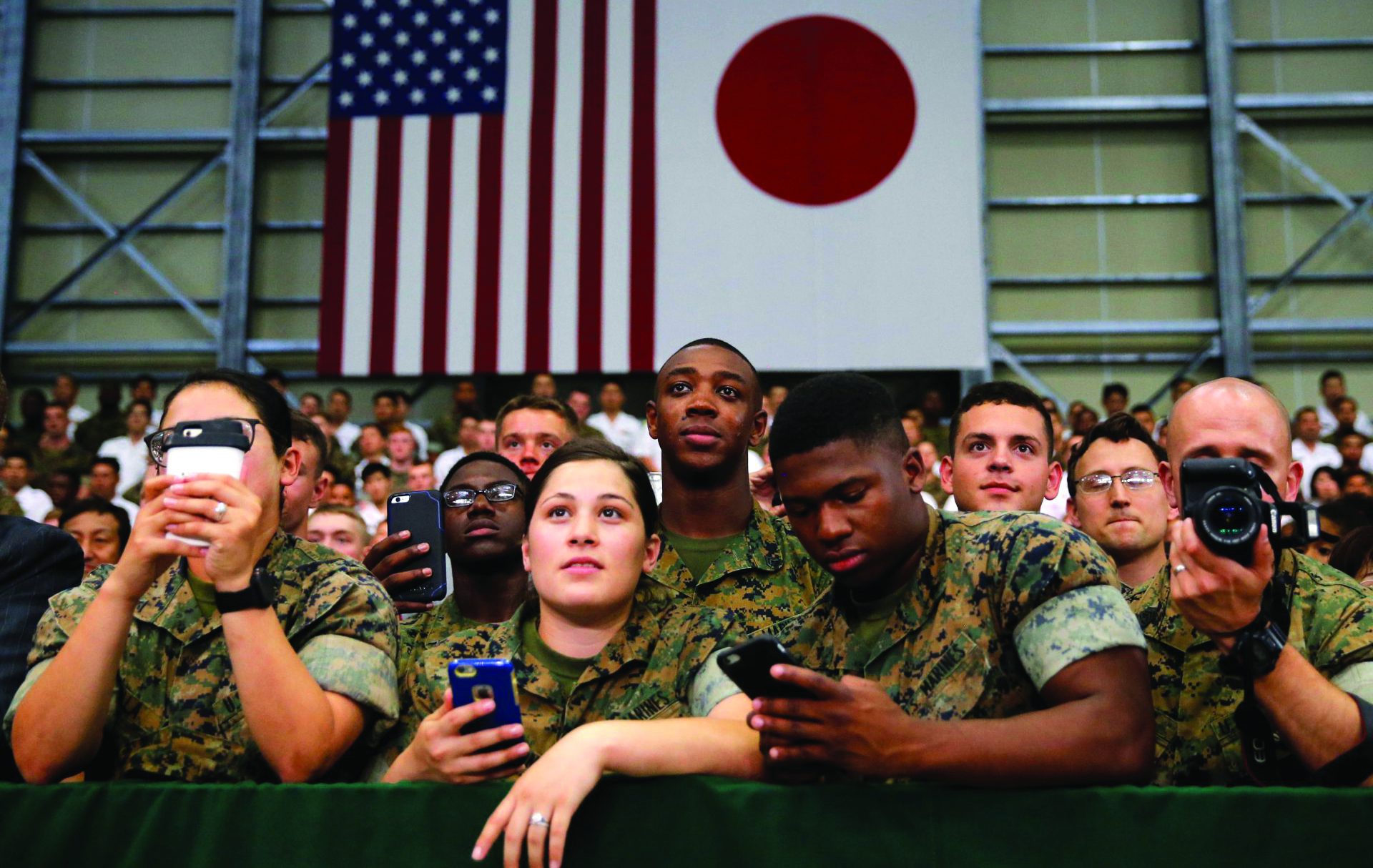
US Cooperation
The US did not take long to support Japan’s new defence strategy and on the following day, Antony Blinken, the US Secretary of State, issued a statement announcing that Washington is welcoming the new strategy because it means an increase in Japan’s defence spending, which will bolster bilateral relations and the alliance’s ability to make peace in the Indo-Pacific region and the world.
The previous bilateral security agreement, between Washington and Tokyo, and its amendments, indicate that the Japanese-American alliance is working to strengthen international stability, peace and security, in the Asia-Pacific region only and not the world as Blinken said, which in turn increased concern in both Russia and China about what they consider to be the American competition in East Asia, especially in the Sea of Japan and the South China Sea, through the forces allied with Washington.
The United States appreciated the increase in Japanese investment in missions and defence cooperation with it and with other allies, to protect the common interests and values outlined identified by Lloyd Austin, the US Secretary of Defence, which include the war on terrorism, maintaining regional stability and prosperity, the promotion of the free market system, the protection of human rights, ensuring freedom of trade and navigation in sea lanes, and developing the energy sector.
The US and Japan have had a special security relationship, while the United States is obliged to defend Japan in any case, Japan is not obligated to do the same for the United States, but, in return, it hosts American forces and bases on its soil, (37,000 American soldiers Permanently stationed on 86 military bases, including the “Yokosuka” Naval Base, which is the headquarters of the US Seventh Fleet).
Washington had adopted a firm stand in terms of supporting and backing Japan’s defence policy, agreeing to send and keep the “Aegis” destroyer permanently in the Sea of Japan.
Furthermore, the US pledged to defend the disputed Senkaku islands between China and Japan, because of the potential existence of oil reserves in the East China Sea.
Military cooperation between the US and Japan has greatly increased over the years, especially after Tokyo decided to participate in the deployment of a missile defence system which required integration between the military leaderships, control and means of communication of the two countries.
Moreover, according to the US plan to reorganize its military bases in the world, Japan will be a major powerhouse in the Asia-Pacific region and will host US air, land and sea forces in the region.
On October 29, 2005, the United States concluded a comprehensive strategic alliance agreement with Japan, which included unprecedented coordination at the operational level and a partial lifting of the ban on the export of advanced military technologies to Japan.
After the Japanese surrender on September 2, 1945, the Security Treaty was signed in September 1951 stipulating the presence of American military bases and divisions along Japanese territory, and this heavy American military presence led to the Korean War.
In January 1960, the treaty was revised, turning into a mutual security and cooperation treaty, according to which the United States is committed to consulting with Tokyo before using its bases in Japan or introducing any nuclear weapon to these bases.
However, the policy of the former US President, Donald Trump, worried Japan, by adopting a different approach in dealing with the US military presence in Japan compared to his predecessors and demanding that Japan doubles its funding for the US presence on Japanese soil, but the administration of the current President, Joe Biden, retracted this policy.
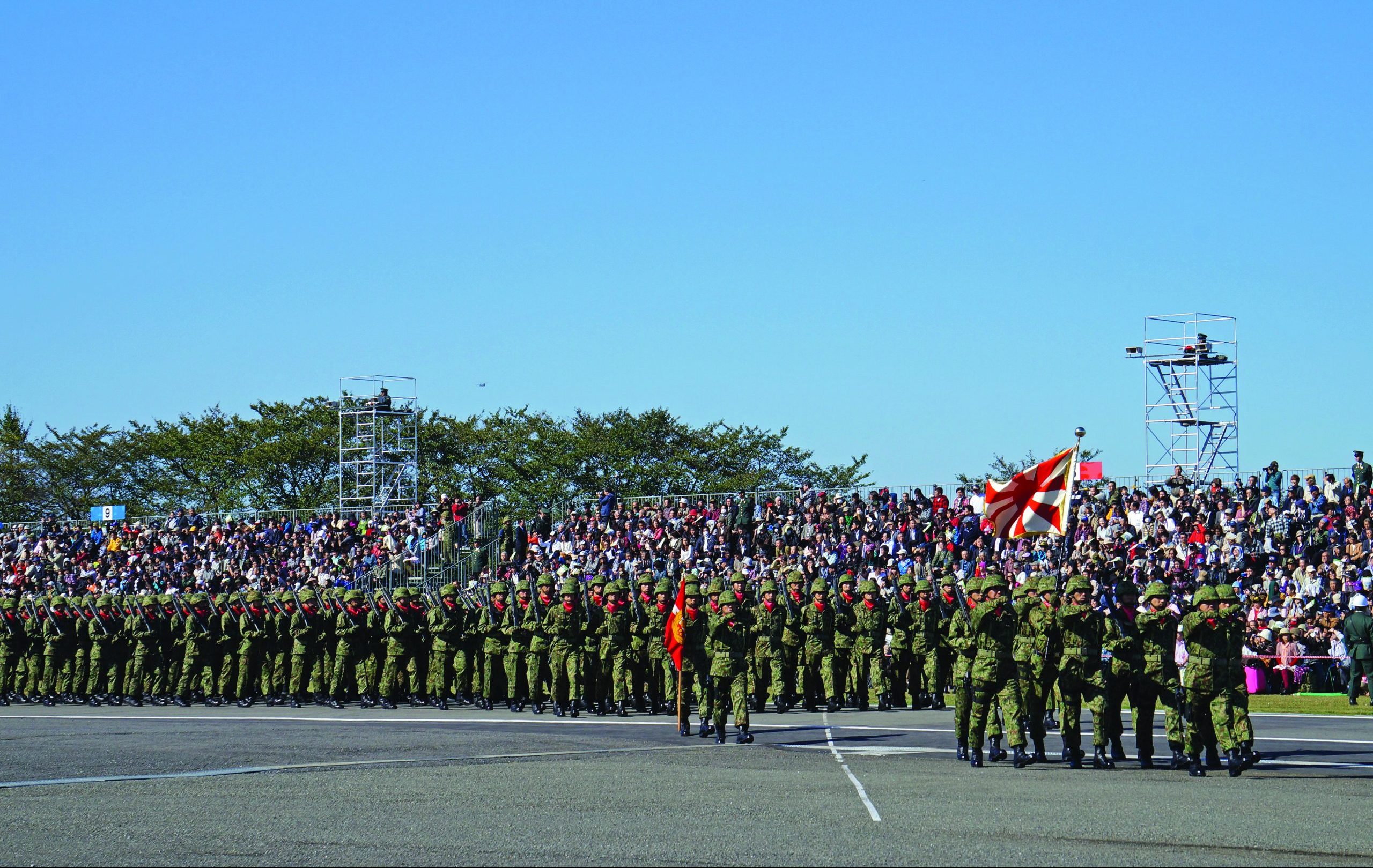
The new strategy & neighbouring countries
Some of Japan’s neighbouring countries have been increasingly concerned about the growing size of its military forces and military spending, especially after it passed laws allowing it to send military forces outside Japanese borders and use its military forces to change the map and shape of the regional system in South and East Asia, which will lead to an accelerating Russian-Chinese rapprochement to counter the American-Japanese rapprochement.
Thus, Japanese officials were keen to highlight their opposition and rejection of any Japanese expansionist policy and confirmed that there is no resurgence of Japanese military power.
Japan stated that it participated in the war to liberate Kuwait (1990-1991) with a total force of 600 in Iraq, who did not participate in fighting and was limited to assisting in reconstruction.
Therefore, in 1992, immediately after this war, Japan adopted the law of “peacekeeping operations”, which allowed it to send its forces on foreign missions, with an international mandate, provided that their tasks are limited to peacekeeping after the conflict is resolved, which means that they will not have to participate in combat operations.
Japan’s ability to deploy the Self-Defence Forces outside its border was enhanced by its procurement of an air-refuelling aircraft, seaplanes and long-range cargo planes.
Moreover, Tokyo defended its position, noting that it will continue to carry out humanitarian and reconstruction work and will not participate in any combat activities.
Japan’s neighbouring countries’ position on the new defence strategy
1-China: Japan’s new defence policy document describes China as an unprecedented strategic challenge to Japan’s peace and stability.
Therefore, the most important radical change in the Japanese strategic orientations is the mention of the Chinese threat for the first time and Beijing’s goals of expanding the scope of its naval military activities and modernizing its nuclear and ballistic capabilities, as well as its air and naval forces.
Japan’s old concerns about China were renewed in August 2022, when Beijing intensified military exercises after missiles fell into the sea near Japan’s Exclusive Economic Zone (EEZ), thus on December 27, 2022, the Japanese Ministry of Defence announced that it would deploy a missile defence unit on one of the islands, in the far western part of the country, to enhance its defence.
For its part, China expressed concern about Japan describing it as a potential threat in its official document and made it clear that Japanese military and security moves are sensitive issues for historical reasons, citing Japanese militarism in the first half of the twentieth century, of which China was a victim.
In the past, Japan apologized for the suffering it caused many peoples in several Asian countries during World War II and confirmed that it would not be a military power once again, but rather an economic power, solving its problems peacefully, without resorting to force.
In addition, China expressed serious concerns about the growing military cooperation between Tokyo and Washington, especially in the field of missile defence, which China considers a threat to global strategic stability.
China maintains that it is keeping its nuclear capabilities at the minimum required to protect its national security and that it is adopting a defensive nuclear strategy that ensures that it isn’t the first to use nuclear weapons, adding that it is committed to peaceful development and seeks to make world peace.
2-Russia: The Japanese National Defence Strategy document describes Russia, its northern neighbour, as a source of concern for Japanese national security, while Russia believes that Tokyo’s attempt to strengthen its military power and its abandonment of the strategy of peaceful development present new security challenges in the Asia-Pacific region.
”It is clear that Tokyo has embarked on a path to strengthening its military power in an unprecedented way, including having the ability to strike,” said the Russian Foreign Ministry in a statement.
Japan replied by confirming that it would remain a peace-loving country and would not pose a threat to other countries.
Relations between Moscow and Tokyo have been tense for a variety of reasons, the most prominent of which is the dispute over the Kuril Islands, since the end of World War II.
Moscow believes that the deployment of warning radar stations near these islands represents a threat to the Russian fleet in the Pacific Ocean, as there has been no official peace treaty between Russia and Japan since the end of World War II.
3-North Korea: The new Japanese national security strategy indicates that the military actions of its western neighbour, North Korea, have become a serious and imminent threat to its security, citing the repeated missile tests North Korea carried out, which set a new record in 2022 (more than 30 missiles), in addition to a spy satellite experiment that it seeks to resume by April 2023, to carry out the imaging and data transmission missions.
For its part, North Korea denounced the new Japanese defence strategy and warned that it would not stand idly by in the face of this threat, which it described as a “danger to world peace”, noting that it will cause a radical change in regional security in East Asia, because this strategy, from Pyongyang’s point of view, practically means Tokyo has the capabilities to launch pre-emptive strikes against other countries.
North Korea and Japan have a mile-long list of mutual grievances and demands, as Japan occupied the Korean peninsula from 1910 to 1945, therefore North Korea is demanding a clear and explicit apology and compensation from Japan for this period.
On the other hand, Japan is concerned about the North Korean weapons program, which is about to reach the stage of possessing weapons of mass destruction along with ballistic missiles that directly threaten Japanese national security.
Moreover, in December 2001, a shootout erupted between a North Korean spy ship and the Japanese Coast Guard, when the spy ship refused to stop and started firing on the Japanese patrol, prompting it to respond in kind and sink it, making this the first time Japanese fleet sink a foreign ship since the end of World War II.
4-South Korea: South Korea protested against the new Japanese national security strategy because of the part regarding islands under dispute between the two countries and demanded that Japan removes its “allegations” that those islands are part of its territory.
Furthermore, South Korea noted that this allegation does not help build a future partnership between the two countries.
The dispute between the two neighbours centres around a group of small islands that lie approximately at an equal distance between them in the Sea of Japan, which South Korea calls “Dokdo”, while Japan calls them “Takeshima”.
Conclusion
Japan’s new defence policy constitutes a major step towards the development of its military capabilities, increasing military spending, and resorting to counter-strikes against external threats.
This move represents an important shift in the Japanese military doctrine that has prevailed since World War II by relying on a defensive policy in the framework of a pacifist constitution.
The US welcomed this policy as it will strengthen the military alliance between the two countries and will increase US arms sales to Japan, while this policy faced criticism from some countries in the region, given Japan’s border and sovereignty disputes over some islands with China, South Korea and Russia.
» By: Major General Dr Ali Muhammad Ali Rajab
(military researcher and strategic expert)


